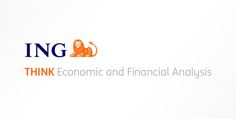Navitas stock soars as company advances 800V tech for NVIDIA AI platforms
The same day President Trump installed an (interim) dovish ally in the FOMC, the Bank of England struck a more hawkish tone, narrowly voting in favour of another 25bp rate cut. The US calendar is very quiet today, and some focus will be on Canada’s jobs figures. EUR/USD may wait until next week for a break above 1.170
USD: Trump Gets His FOMC Dove
President Trump nominated Stephen Miran to fill the vacant FOMC seat until the end of January, pending Senate confirmation in September. Miran has echoed Trump’s dovish calls and Fed criticism of late, as well as downplaying the inflationary impact of tariffs. He’s widely expected to join Christopher Waller and Michelle Bowman in the dovish camp for the few meetings he will attend, with a non-negligible risk he might try to build consensus for a 50bp move.
But this is an interim position, and reports suggesting that Waller (a more moderate dove than Kevin Hassett) is now the favourite to replace Fed Chair Jay Powell may well have mitigated the downside impact for short-term rates. The US dollar was only modestly weaker on the announcement.
Today is a very quiet one on the macro side, with no releases in the US. Yesterday, initial jobless claims snapped back higher to 226k after a prolonged decline. Continuing claims – which are a gauge of the difficulty to re-enter the workforce – spiked to 1974k, which is the highest since November 2021, and consistent with the narrative of a faster deterioration in the jobs market.
We think DXY can stabilise around 98.0 today, given the lack of market drivers and proximity to Tuesday’s CPI release, but the bias remains bearish.
Elsewhere, Canada releases jobs figures today. We continue to see upside risks for the unemployment rate, which is expected to re-accelerate to 7.0%. Our view remains bearish on CAD in the crosses as markets continue to underestimate the risks of two Bank of Canada cuts this year due to the tariff fallout.
EUR: Markets to Tread Carefully On Ukraine Truce Hopes
After an initial positive spillover on the euro from news of Trump meeting with Putin next week, markets now need to assess how realistic a truce is. We expect they will tread carefully on the topic, considering there are few indications so far that Russia is ready to agree to a total ceasefire in Ukraine. The key gauges of market sentiment on this topic will be energy prices, EUR/USD, EUR/CHF and EUR/JPY.
Scandinavian currencies should also do well if geopolitical risk is priced out, with Sweden’s krona likely better positioned than Norway’s krone due to opposite exposures to energy prices. The drop in NOK/SEK yesterday might be attributed to that. Sweden also reported an acceleration in July CPIF inflation to 3.0%, but that was widely expected, and core inflation actually decelerated faster than anticipated to 3.1%.
We still aren’t forecasting any extra cut by the Riksbank, but admit this has become a much closer call after the EU-US trade deal. Anyway, markets are fully pricing it in, so we aren’t concerned about our bullish medium-term call on SEK.
Back to EUR/USD, we could see some stabilisation in the 1.166-1.170 area for now. Next (LON:NXT) week’s US CPI will tell us whether another break higher is possible.
GBP: Peak Dissent at the BoE
Yesterday’s 25bp rate cut by the Bank of England had a clear hawkish tinge (full review here). The MPC had to hold two rounds of voting for the first time ever to reach a 5-4 majority, as a larger-than-expected hawkish dissident faction emerged. On top of that, the BoE subtly hinted that the end of the easing cycle is approaching by saying: “the restrictiveness of monetary policy has fallen as Bank Rate has been reduced”.
Governor Andrew Bailey’s press conference wasn’t as hawkish, but given the significant upward revision in the inflation forecasts and downplayed jobs market concerns, the bear flattening of the yield curve and sterling’s rally are entirely justifiable. Another cut by year-end is now just 75% priced in.
The other hot topic for this meeting was the reduction in quantitative tightening. The MPC published their estimate that QT added 15-25bp to back-end yields, which should keep expectations of a reduction in September alive.
The large hawkish dissent places greater emphasis on future inflation prints. A more convincing moderation now appears necessary to have another 2025 cut fully back in the price. Sterling is therefore in a stronger position, even though the adverse fiscal story and EUR’s strength may prevent a EUR/GBP correction from running much further. Cable remains more appealing, and a move above 1.35 is very possible at this stage.
Disclaimer: This publication has been prepared by ING solely for information purposes irrespective of a particular user’s means, financial situation or investment objectives. The information does not constitute investment recommendation, and nor is it investment, legal or tax advice or an offer or solicitation to purchase or sell any financial instrument. Read more
